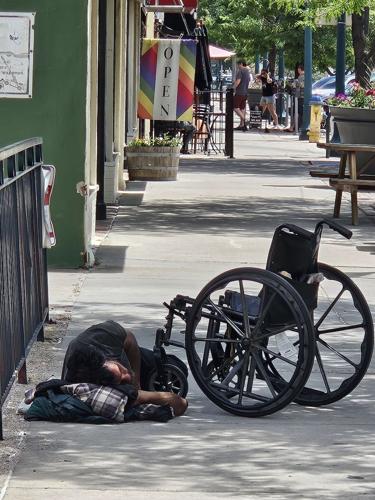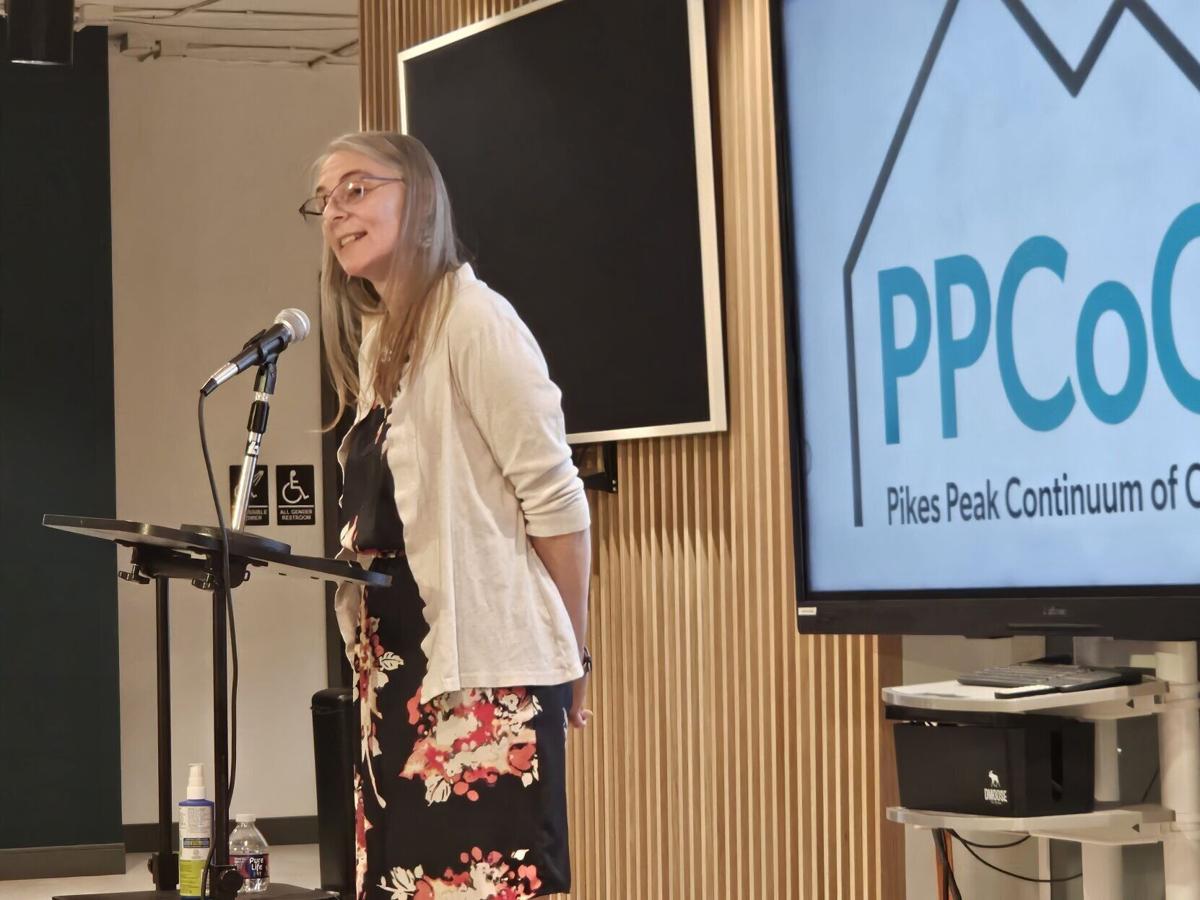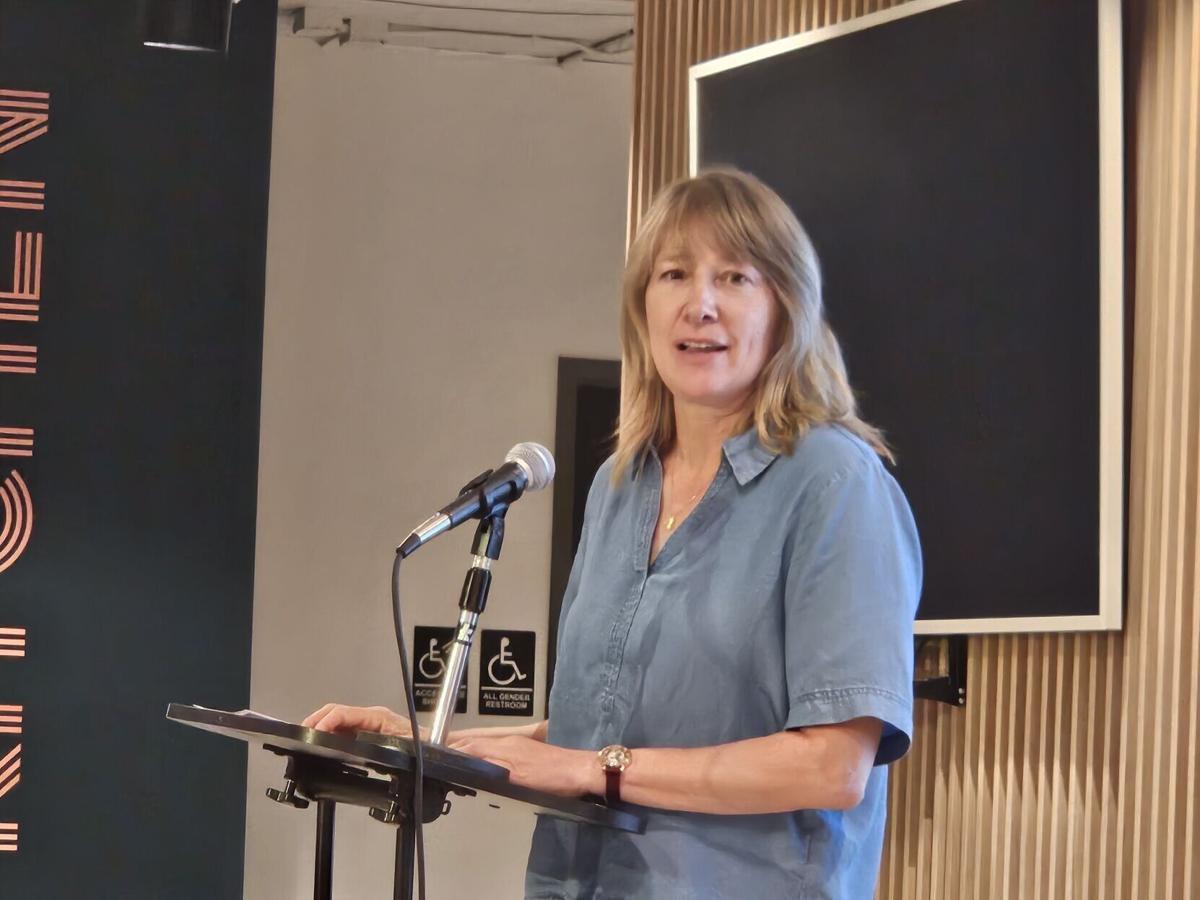Homeless population in Colorado Springs hit record highs, Point in Time survey shows

The homeless population in El Paso County has burgeoned over the past year, the newly released Point in Time results show. The category of “chronically homeless,” which includes people who have been homeless for at least one year and have a physical, developmental or mental disability, grew from 282 last year to 644 this year.
Debbie Kelley, The Gazette
A record-high spike of people living on the streets and in homeless shelters and supported housing programs in El Paso County is reflected in data released Monday from this year’s federally required Point-in-Time and Housing Inventory Count.
The number of people countywide who described themselves as homeless on the night of Jan. 26 ballooned from 1,146 in 2024, to 1,745 people this year, according to the statistics presented by the survey administrator, Pikes Peak Continuum of Care, a group of service providers and other members.
That’s a 52% increase year-over-year and tops the county’s 2018 record of 1,551.
Are homeless people in Colorado Springs just park hopping?
“This data should be interpreted with context and caution,” Becky Treece, chair of the governing board of the continuum of care said at a press conference. “It is widely understood to be undercounted.”
The survey doesn’t include people in institutions such as rehab facilities, hospitals or jails, for example.

Becky Treece, chair of the governing board of the Pikes Peak Continuum of Care, which administers the annual Point in Time survey.
Debbie Kelley, The Gazette

Becky Treece, chair of the governing board of the Pikes Peak Continuum of Care, which administers the annual Point in Time survey.
Also this year, the number of “unsheltered” people who live in encampments and other uninhabitable places more than doubled to 522.
In 2024, there were 259 “unsheltered” — the fewest in that category since 2015.
And the chronic street population, those who have a physical, mental or developmental disability and have been homeless for at least one year, is at 644. Compare that with 282 chronically homeless in last year’s survey.
“They’re remaining unhoused for longer periods of time,” said Aimee Cox, chief housing and homelessness officer, for the city of Colorado Springs.

Aimee Cox, chief housing and homelessness officer, for the city of Colorado Springs, said the results of this year’s Point in Time survey of the homeless population reveals “painful realities” and “hopeful signs.”
Debbie Kelley, The Gazette

Aimee Cox, chief housing and homelessness officer, for the city of Colorado Springs, said the results of this year’s Point in Time survey of the homeless population reveals “painful realities” and “hopeful signs.”
Organizers point to population growth, along with a broader and improved local tracking system for the skyrocketing figures.
Surveyors, which included more than 100 volunteers as well as organized outreach teams, went into every area of El Paso County, not just the known sites where homeless people congregate, officials said.
“There is not an area of our community in which there is no one experiencing homelessness,” said Heather Ryan-Figueroa, director of housing programs for Homeward Pikes Peak.
For the third year, members of the Colorado Springs Homeless Union were hired to seek out respondents in hard-to-find places.
The low temperature in Colorado Springs dropped to 9 degrees Fahrenheit and snow fell on the night of Jan. 26. Temporary warming shelters were activated, and the main emergency shelter, Springs Rescue Mission, was under its severe weather protocols that allow the shelter to make room no matter how many people show up.
Because of the bad weather some people may have spent the night on a couch of a friend, officials said, and were not counted the following day when the census began.
One volunteer said about half of the people she came across during the process declined to participate in the voluntary survey.
“There are so many factors that led to the numbers,” said Merrina Mendez, community relations coordinator for homeless initiatives at ChangeLine, a nonprofit that oversees the Pikes Peak Continuum of Care.
The data has been reported to the U.S. Department of Housing and Urban Development. Along with other information, the findings will be used in calculating how much federal funding the continuum of care will receive for homelessness programs. HUD provided El Paso County with $3.9 million in the 2024 fiscal year and $2.8 million in 2023.
The analysis also shows there aren’t enough local beds to meet the growing need for shelter and housing, organizers said.
On the night of the count, El Paso County had 1,227 year-round emergency and transitional beds and 324 seasonal or overflow beds. But there would have been a shortage of 194 beds in order to accommodate every homeless person who responded to this year’s survey, according to officials.
The city also had 1,228 permanent housing beds dedicated and 66 new permanent housing beds in its inventory.
Step Springs nears completion of residential addiction recovery center for homeless men
“We’ve added more housing, which is great; the more housing, more housing gets filled. But we still have a deficit in housing,” Ryan-Figueroa said.
It’s up for debate as to how useful the Point in Time is.
It’s certainly “imperfect,” Mendez said. “The Point in Time is one snapshot — it’s one singular night in January and is not intended to base our homelessness response off of.”
However, the data is meaningful in that it provides the community with “a shared understanding” of the issue, which leads to “thoughtful policy” for elected leaders and developing possible interventions, said Cox, the city’s housing expert.
“It has painful realities and hopeful signs,” she said.
Mayor Yemi Mobolade said the city’s five-year Homeless Response Action Plan created last year is guiding solutions, which include increased transitional housing, expanded outreach efforts downtown, targeted enforcement where needed and strong community partnerships.
“The Point in Time offers insight into what’s changing, where the greatest needs are and how we can respond more effectively as a city,” Mobolade said in a statement. “Homelessness is a complex challenge, but Colorado Springs is not standing still.”
A first-time, statewide study released in April indicated that Colorado Springs’ homeless population is much bigger than what’s presented in the Point in Time.
Homelessness decreases in El Paso County this year, new data shows
In combining three sets of data, the State of Homelessness Report 2024 concluded that El Paso County had 6,846 homeless adults and children last year, as compared with the 1,146 people in the Point in Time.
One thing is clear, officials said Monday. The community needs to work together to help get people back into stable housing, address substance use and other mental health problems, become self-sufficient and lead full lives.
“People recover from homelessness in communities and relationships,” Cox said. “We’re not one solution away from ending homelessness. It involves law enforcement, education, job training and employment … Our response must be multi-faceted.”
Contact the writer: 719-476-1656.




